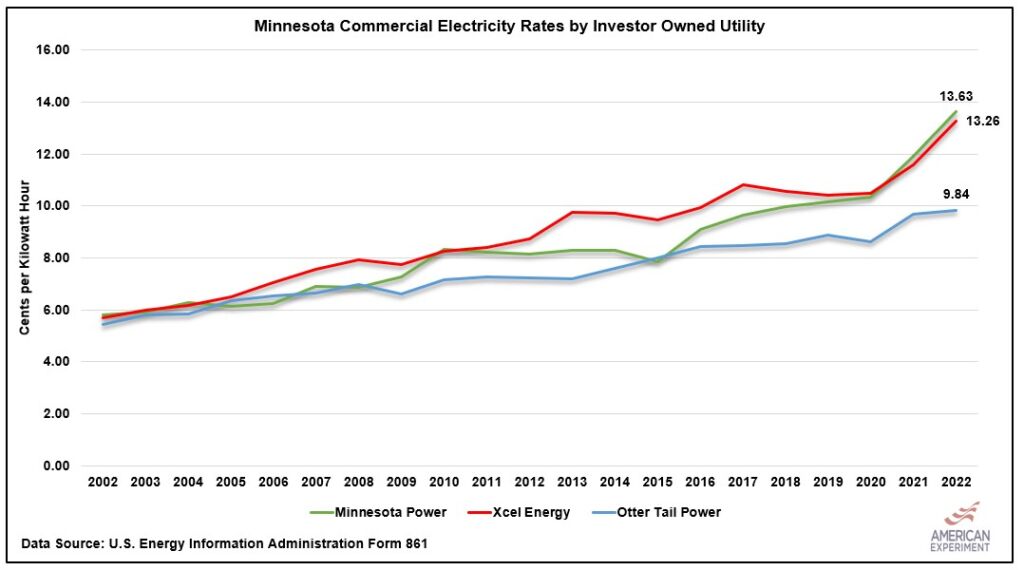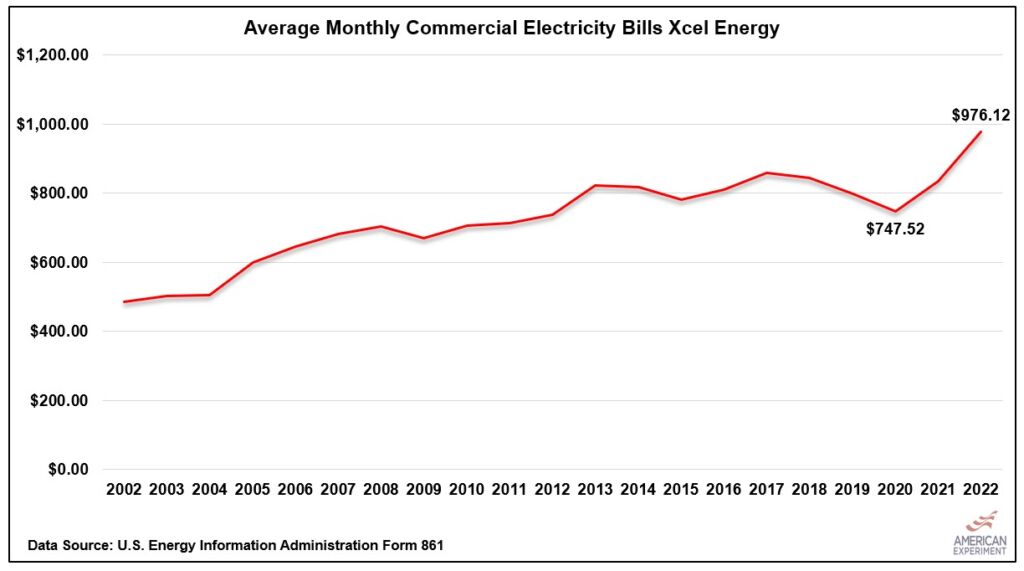Electricity prices rise for Minnesota grocery stores, schools, and small businesses
Electricity rates are on the rise for commercial electricity users, which include Minnesota grocery stores, schools, and small businesses, adding to the rising costs these firms already face due to inflation.
Data from the U.S. Energy Information Administration (EIA) show that Minnesota Power and Xcel Energy have the highest commercial electricity rates in the state, while Otter Tail Power’s commercial prices are substantially lower.
Since 2007, Minnesota Power’s commercial rates grew by 97 percent. Xcel Energy’s rates grew by 75 percent, with Otter Tail increasing by 48 percent during this time.

Rising commercial electricity rates make it more difficult for all Minnesota businesses to provide goods and services at a cost everyone can afford. Electricity prices are particularly important for grocery stores because these businesses use large quantities of electricity for refrigeration and lighting.
Groceries gone wild
According to Business Energy Advisor, grocery stores use 52.5 kilowatt hours (kWh) of electricity per square foot per year. An average Cub Foods store is 75,000 square feet, which means an average store consumes 3.9 million kWhs of electricity every year (the equivalent of 519 homes). This means grocery stores like Cub Foods have seen a massive increase in their electricity bills in recent years.

Based on these figures, the average store would have seen its electricity bill increase by nearly $108,700 per year since 2020, growing from $413,217 in 2020 to $521,943 in 2022.
With electricity costs surging this way, is it any wonder that food prices keep going up?
Class sizes at schools
After school staff, energy costs are the largest expenses faced by school districts, accounting for a larger share of the budget than books, computers, and other supplies. This means every additional dollar spent on energy is one less dollar that can be spent educating children, which could mean larger class sizes or fewer services.
We are already seeing these types of choices play out in real-time.
In September, I wrote that Kansas school districts filed documents at the Kansas Corporation Commission, which is the equivalent of Minnesota’s Public Utilities Commission, decrying a massive 25 percent rate increase proposed by Evergy, the state’s largest investor-owned utility. The school district wrote:
“The largest area of operating expenditures is personnel, so a likely consequence would be the inability to add and retain teachers and other school staff,” Wichita Public Schools Chief Financial Officer Susan Willis said in written testimony last month. “This would lead to increasingly larger class sizes and continued reduction of student services.”
It won’t be a surprise to our readers when Minnesota schools are inevitably faced with a similar situation, but most of the people who only get their news from mainstream sources are going to be shocked that energy costs for educational institutions have gone up, not down. This could be a very teachable moment for us as we try to help people understand the implications of the energy policy we are passing in our state.
Squeezing small businesses
Small businesses are also suffering from rising commercial electricity prices. According to the EIA data, there are 181,000 firms that are charged commercial rates for their power in Minnesota. These include offices, restaurants, retail stores, and other businesses.
The average commercial customer in Minnesota paid $976 per month for electricity in 2022. Bills were substantially lower in 2020 because the government response to the COVID-19 pandemic forced small businesses to close while larger stores were allowed to stay open.

However, bills rebounded as stores reopened and used more electricity and as companies like Xcel Energy raised their prices to compensate for selling less electricity. Remember, monopoly utilities are guaranteed to make a certain amount of money every year by the state, so if you use less electricity, they will simply raise the price of it.
Rising commercial electricity rates are one more factor that is making Minnesota an increasingly unattractive place to do business. Sadly, the Blackout Bill passed by Governor Walz and liberal lawmakers in St. Paul will make electricity more expensive and less reliable for everyone.